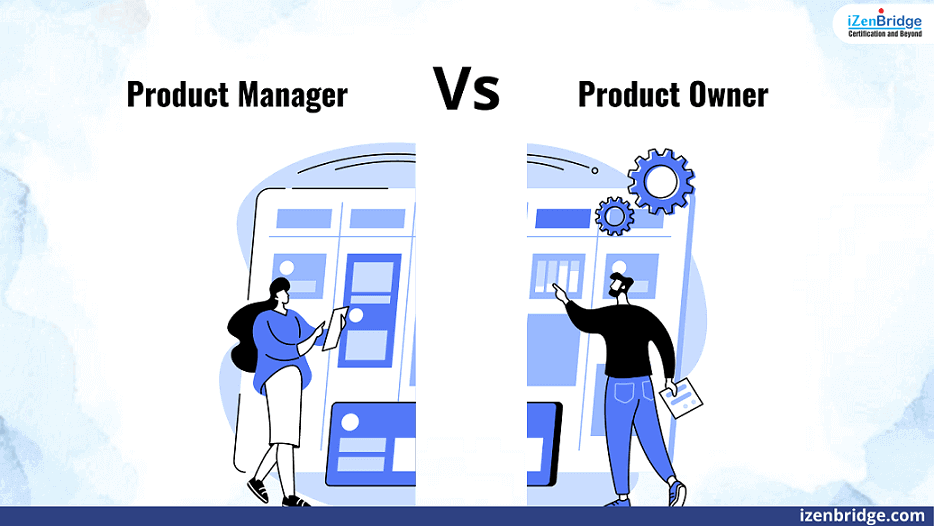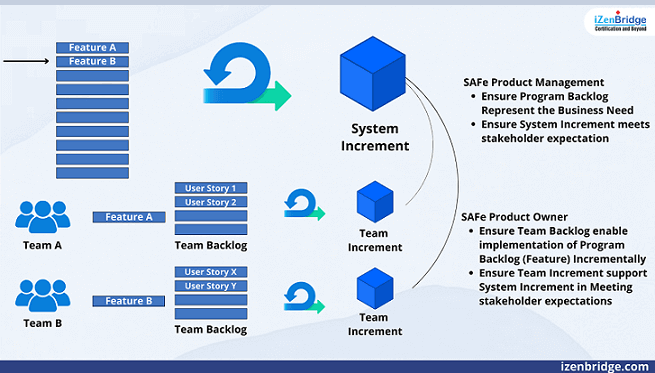

The role of a Product Manager and a Product Owner can vary based on the organization’s framework. In a large organization, there might be two separate people who perform different parts of the product management work. One person might focus more on strategic issues, while the other person focuses on execution and working with the development team. In a smaller or mature organization, there may be one person who does both jobs and is referred to as either a Product Manager or Product Owner.
The work of a Product Manager or Product Owner involves identifying what should be developed and prioritized to deliver business value. This can involve marketing research, pricing, user understanding, identifying target segments, and working with the development team to get features done. The Product Manager or Product Owner starts by figuring out the desired user and the business case behind that user. They then define the target user and why they are focusing on that particular user.
The product management activity, which is the business part of the job, can be performed by either the Product Manager or the Product Owner. This involves observing customer behavior and analyzing usage patterns to decide what should be done next.

SAFe divides the responsibilities of Product Management (SAFe Product Manager) into five main areas:
Exploring Markets and Users: Product Management continuously gathers insights into market dynamics and user preferences through primary and secondary research, market segmentation, identification of market rhythms and events, and understanding end-user needs.
Connecting with the Customer: Product Management involves customers throughout the product life cycle to ensure that their needs are built into the product strategy. This is achieved through a customer-centric mindset, empathy with the customer, and applying design thinking.
Defining Product StrategyVision, and Roadmaps: Product Management aligns the product strategy and vision with the portfolio’s objectives, creates an equitable value exchange model, and communicates a compelling vision. They also manage flexible roadmaps that guide implementation.
Managing and Prioritizing the ART(Program) Backlog:Product Management supports the flow of work through the Program Backlog, ensuring that it always reflects the most current customer needs. They guide feature creation, prioritize features with Weighted Short Job First (WSJF), and accept features.
Supporting Solution Delivery:Product Management ensures that the Continuous Delivery Pipeline produces high-quality solutions that meet customer needs. They collaborate with Solution Management during pre- and post-PI Planning, evaluate solutions, and support value delivery.
SAFe divides the responsibilities of SAFe Product Owner into five main areas:
The PO’s responsibilities can be divided into five primary areas, which are described in detail below.
Connecting with the Customer:The PO works closely with Product Management to understand the evolving needs of customers and stakeholders and apply a customer-centric mindset with the help of design thinking tools. The PO must be aware of the customer’s needs, wants, and preferences and also keep track of non-customer stakeholders. The PO identifies the problems to be solved, discovers the customer needs, and develops whole-product solutions that maximize customer satisfaction and loyalty.
Contributing to the Vision and Roadmap:The PO has practical insight into the solutions and experiences that the teams can deliver and contributes to the vision and roadmap by analyzing market research, representing the end-user, assisting with Product Backlog prioritization, and educating the ART during PI Planning.
Managing and Prioritizing the Team Backlog: The PO is responsible for maintaining the content and the conceptual and technical integrity of the Team Backlog. The PO guides story creation, prioritizes backlog items, and accepts stories in collaboration with the team. The PO ensures that the highest-value backlog items are delivered in the shortest sustainable lead time and in the right sequence.
Ensuring Quality: The PO ensures that the solutions delivered by the team are of high quality and meet the acceptance criteria. The PO verifies the quality of the solution by testing it, collaborating with the team to resolve defects, and continuously improving the process.
Collaborating with the Scrum Master: The PO works closely with the Scrum Master to ensure that the team is working effectively and efficiently. The PO and the Scrum Master collaborate to remove obstacles, improve the process, and ensure that the team is aligned with the PO’s goals and objectives.

In conclusion, The SAFe Product Manager focuses on defining solutions that meet customer needs, exploring markets and users, connecting with the customer, defining product strategy, vision and roadmaps, and supporting solution delivery. On the other hand, the SAFe Product Owner is responsible for connecting with the customer, contributing to the vision and roadmap, managing and prioritizing the team backlog, ensuring quality, and collaborating with the Scrum Master. Both roles play a crucial role in delivering high-value solutions that meet customer needs and ensure customer satisfaction and loyalty.
Product Management – Scaled Agile Framework
Product Owner – Scaled Agile Framework
| Name | Date | Place | – |
| SAFe POPM Certification and Training | 18 – 19 January 2025 | India | More Details |
| SAFe POPM Certification and Training | 26 – 27 January 2025 | Bangalore | More Details |